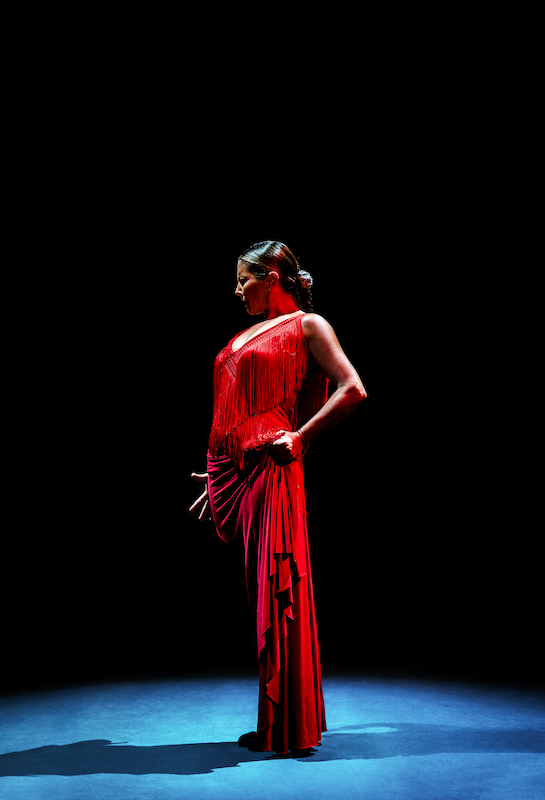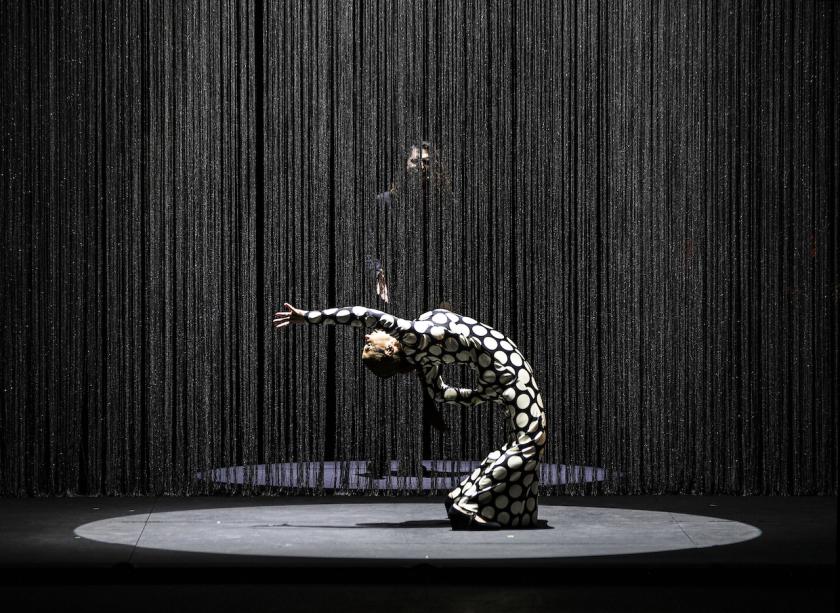When flamenco first came out of the shadows and started to fill big theatres, it was like something out of a historical pageant. The shows that played London in the early 1990s harked back to an imagined gypsy past where old men hammered rhythms on blacksmiths’ anvils and women swirled extravagant frills. The crudely amplified music lost much of its detail but audiences lapped it up anyway. Since then theatrical flamenco has come a long way, dropping the campfire shtick and investing in designer threads and sound design. Leading the charge has been Sara Baras, now 52, who first came to notice not only for her penchant for performing in trousers but for challenging male prowess in traditionally men-only dances. Her signature Farruca strikes an almost martial stance, chest held high, hand on hip.
Now garlanded with major awards over three decades Baras has nothing to prove in terms of technique. This seems to have liberated her – to try new ideas and find new depths in the art form. Previous shows she has brought to Sadler’s Wells have wowed with their stagecraft and virtuosity. The latest, Alma (“soul”), has that and more, and it’s the “more” that is almost impossible to describe. It remains a mystery how a dance form that is basically a confection of rhythmic feet and twining arms can deliver something akin to a religious high, but there are long stretches of this show that touch something rare and ineffable. Two hours (without interval) have never felt so short.
 Baras’s genius has been to modernise without losing sight of flamenco’s core values. In Alma, one of her experiments is to bring the obsolete Bolero back into currency as a song-and-dance form. Another is an extended call-and-response improv with saxophonist Diego Villegas, who makes you forget the instrument’s affinity with jazz as he riffs across its three-octave range in a distinctly different accent. Another specialty of Baras (pictured right) is the sense of community she creates around her. I doubt there’s another superstar who’d dress their backing chorus in slinky frocks identical to hers, or copy their moves while awaiting her solo cues. Typically, the musicians are all men – who needs a female vocalist when you’ve got Israel Fernández swooningly beautiful falsetto? – but the supporting dancers are almost all female. Daniel Saltares gets a cheer for being the token hombre. It’s a tough gig, given that some of the time Baras leaves him standing like a lemon while she duets with one of the women.
Baras’s genius has been to modernise without losing sight of flamenco’s core values. In Alma, one of her experiments is to bring the obsolete Bolero back into currency as a song-and-dance form. Another is an extended call-and-response improv with saxophonist Diego Villegas, who makes you forget the instrument’s affinity with jazz as he riffs across its three-octave range in a distinctly different accent. Another specialty of Baras (pictured right) is the sense of community she creates around her. I doubt there’s another superstar who’d dress their backing chorus in slinky frocks identical to hers, or copy their moves while awaiting her solo cues. Typically, the musicians are all men – who needs a female vocalist when you’ve got Israel Fernández swooningly beautiful falsetto? – but the supporting dancers are almost all female. Daniel Saltares gets a cheer for being the token hombre. It’s a tough gig, given that some of the time Baras leaves him standing like a lemon while she duets with one of the women.
I used to wonder why flamenco shows didn’t print out translations of the lyrics for the benefit of non-Spanish speakers, but in truth it’s not hard to get the gist of the songs. The words for “night”, “death”, “heart” and “dream” repeat with Duolingo insistence. Harder to grasp are the different musical forms, each with its own system of rhythmic handclaps - Seguiriya, Bulería, Soleá .… In the more sophisticated flamenco shows – those devised by Baras, or by the guitarist Paco Pena – the dances often segue so seamlessly that learning to distinguish them seems a hopeless task.
Bulería is the easiest to recognise. It’s the party number, licencing the dancer to shrug off the hauteur and have some fun. Baras is a joy as she hoists her long fringed skirts to rattle her steel-capped heels around the stage like a toy locomotive, pausing only to kick an imaginary stone from her path. Although the movement of her feet is barely visible, their rhythmic complexity surpasses anything a drummer could do, and it whips up the audience to screaming pitch. Yet the images of Baras that linger are from the quiet moments – like the time she lays an antique shawl on the ground and broods over it as if it were a corpse, or the time she simply stops dancing to stoop and touch the floor, as if to thank it for relaying her messages. Learning about flamenco, for a gringo like me, is a lifelong journey, and Baras a wonderful teacher.














Add comment